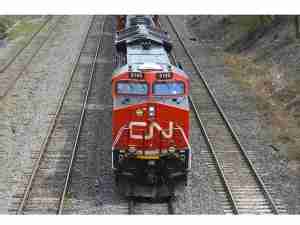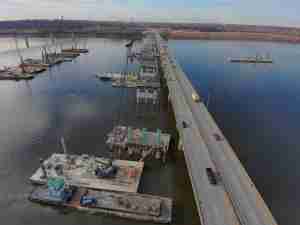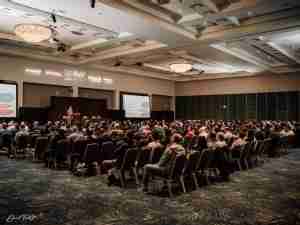Modi looks eastward as BRICS leaders meet amid Pakistan tensions
By: | Oct 13 2016 at 06:00 PM | Intermodal
It’s not as catchy as BRICS and wasn’t coined by a Goldman Sachs economist.
But as leaders of the world’s largest emerging markets gather in India for the eighth annual BRICS summit, New Delhi is trying to emphasize a shift in its foreign policy toward friendlier eastern neighbors and focus on another regional grouping: BIMSTEC.
The obscure acronym, which stands for the Bay of Bengal Initiative for Multi-Sectoral Technical and Economic Cooperation, includes India, Bangladesh, Nepal, Bhutan, Sri Lanka, Myanmar and Thailand. The grouping is notable mainly for who it excludes: India’s nuclear arch-rival Pakistan.
As Prime Minister Narendra Modi hosts the BRICS leaders of Brazil, Russia, China and South Africa in the coastal Indian state of Goa on Oct 15-16, he has invited BIMSTEC leaders—including Myanmar’s Aung San Suu Kyi—for a parallel “outreach” meeting observers say is symbolic.
Although BRICS economies are far larger, rising tensions with Islamabad, geopolitical rivalry with China and the realities of geography have New Delhi looking toward the fast-growing economies of Southeast Asia, where even small infrastructure investments could lead to increased trade ties.
“We are giving it a lot of importance,” Preeti Saran, a senior diplomat at India’s foreign ministry, told reporters in New Delhi on Oct. 7.
‘Reinvigorate’ Grouping
The move reflects Modi’s “neighborhood first” policy to boost South Asian prosperity by uniting the region’s disjointed economies with infrastructure links. India has long had a “Look East” policy. After Modi took power, he changed it to “Act East.”
BIMSTEC, which was founded in 1997, is far from a new grouping. It is not even the most prominent multilateral group in the region—a title that arguably belongs to the South Asian Association for Regional Cooperation, or SAARC, which includes Pakistan and Afghanistan.
Modi had previously pushed to prioritize regional economic integration in South Asia, a region the World Bank says will have 7.3 percent GDP growth in 2017. However, tensions are running high after militants killed 19 Indian soldiers in Kashmir and India retaliated after blaming Pakistan. New Delhi led other nations in a boycott of a planned SAARC summit in November. That led to the meeting’s cancellation.
“SAARC is pretty much dead now,” said Constantino Xavier, an associate with the Carnegie Endowment for International Peace India, a think-tank. “You need to work on regional cooperation and integration through different” venues.
With India’s goal of deeper regional economic integration through SAARC effectively on hold due to disagreements with Pakistan, New Delhi is looking to rejuvenate the long-ignored BIMSTEC as the organization approaches its 20th anniversary.
“That is a very auspicious time for it to rejuvenate and reinvigorate itself,” Saran said, “What is very positive about this grouping is one, that there are a lot of commonalities, and secondly, that there are no issues. “
BRICS
The BRICS grouping—which has its roots in a 2001 Goldman Sachs research report—is still important for India, even if enthusiasm for the grouping has been waning.
The ongoing tensions between India and Pakistan are likely to figure prominently when Modi meets his counterparts on the sidelines of the summit as New Delhi continues to spearhead efforts to isolate Islamabad diplomatically.
The Indian prime minister will speak one-on-one with Chinese president Xi Jinping about ending Beijing’s opposition to India joining the global Nuclear Suppliers’ Group, an export control group that facilitates the transfer of civil nuclear technology among members, The Indian Express reported. China is India’s largest trading partner, with total trade of about $75 billion.
He will also meet Russian president Vladimir Putin, who is extending his stay for a bilateral summit with India. Russia and India will reportedly sign a deal to jointly produce KA-226T helicopters in Goa, reports Russian news agency RIA Novosti. From 2011 to 2015, nearly 40 percent of Russian arms exports went to India, according to the Stockholm International Peace Research Institute.
The BRICS summit provides India a venue to rekindle its drifting relationship with Russia without being part of the Moscow’s anti-western global stance, according to Samir Saran, vice-president of the New Delhi-based Observer Research Foundation think-tank.
It also allows Modi to speak with his Chinese counterpart without the pressures of a formal bilateral meeting, Saran added. He suggested Modi’s decision to bring along BIMSTEC instead of SAARC itself, is part of a necessary, symbolic shift in Indian policy making to emphasize its “neighborhood first” policy.
“It’s political signaling,” he said. “It makes both political and economic sense for India to be engaged with this particular region.”
Infrastructure
Despite solid economic growth in South Asia, integration of the region’s economies is still stunted by historical animosity, congested borders and trade barriers. The World Bank estimates reducing trade barriers could result in a boost of 17 percent to the GDPs of Bangladesh and Sri Lanka, and a 15 percent increase to India, by 2020.
A lack of infrastructure compounds the problem. India, however, has eyed Chinese interest in the region with concern. The decision to hold the two summits—BRICS and BIMSTEC—could be a sign New Delhi hopes to funnel Beijing’s investments into road and rail connectivity from northeast India into Myanmar and Southeast Asia, according to Carnegie’s Xavier.
India’s trade with the fast-growing economies of Southeast Asia is limited but still better than with its neighbors. India’s trade with Myanmar is worth less than $2 billion, but trade relationships with both Thailand and Vietnam are worth more than $8 billion each. Economic ties with Indonesia are worth $16.6 billion, far more than trade with neighbor Bangladesh at $6.23 billion or Sri Lanka at $5.14 billion.
“Before, India was saying this is our turf. That has changed,” Xavier said. “There’s a mindset now that we’re going to work out cooperative agreements to promote regional integration.”










